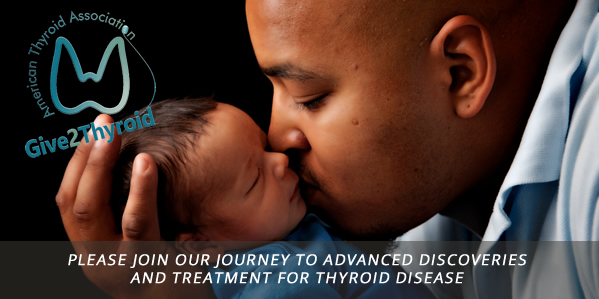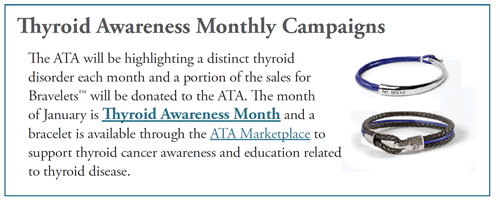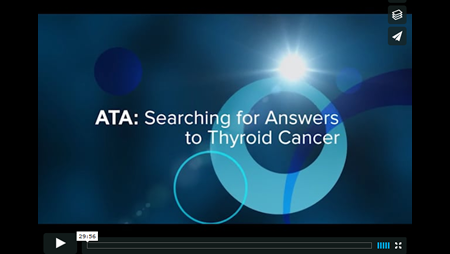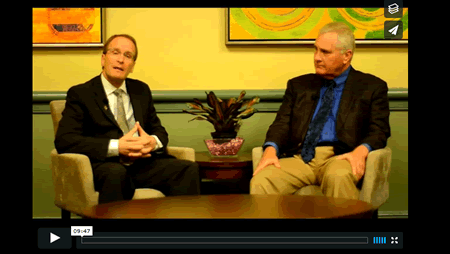Clinical Thyroidology for the Public summarizes selected research studies discussed in the previous month’s issue of Clinical Thyroidology, an official publication of the American Thyroid Association. Editor-in-chief, Alan Farwell, MD, FACE
Volume 13 Issue 1
Available in pdf format for saving and printing and Web page format for viewing online
PDF Format for Saving and Printing
Clinical Thyroidology for the Public Volume 13 Issue 1 (PDF file, 6.47 MB)
TABLE OF CONTENTS – Web Format
HYPOTHYROIDISM Thyroid hormone replacement dosing is variable in overweight and obese patients after a thyroidectomy
After a total thyroidectomy, a standardized levothyroxine dose is often prescribed based on the patient’s body weight. Although suitable for many patients, prior studies have suggested that obese individuals may need a relatively lower dose relative to their body weight. This study was conducted to identify a better method for picking the initial dose of levothyroxine for obese patients.
Papoian V et al. Evaluation of thyroid hormone replacement dosing in overweight and obese patients after a thyroidectomy. Thyroid. Epub 2019 Oct 1. PMID: 31573413.
(PDF File for saving and printing, 407 KB)
HYPOTHYROIDISM TSH reference ranges should be used to safely guide thyroid hormone treatment in hypothyroid patients
Current guidelines recommend that the dose of the thyroid hormone in hypothyroid patients should be adjusted to resolve symptoms and to keep the TSH level within a standard range. Although this range is considered normal, we do not know for sure whether variations within this range result in different health outcomes. The aim of this study was to explore whether risk of death, heart disease, stroke or broken bones were more common at certain TSH levels in patients who were treated for hypothyroidism.
Thayakaran R et al 2019 Thyroid replacement therapy, thyroid stimulating hormone concentrations, and long term health outcomes in patients with hypothyroidism: longitudinal study. BMJ 366:l4892. PMID: 31481394.
(PDF File for saving and printing, 558 KB)
GRAVES’ DISEASE Serum TSH receptor antibodies fall gradually and only rarely switch functional activity in treated Graves’ disease
Graves’ disease is caused by TSH receptor antibodies that stimulate the thyroid to make excess amounts of thyroid hormone. The purpose of this study was to gain information regarding the trend of the levels of the TSH receptor antibodies over time and also understand whether the function of those antibodies changes contributing to remission after treatments with antithyroid medications.
Nalla P et al 2019 Thyrotropin receptor antibody concentration and activity several years after treatment for Graves’ disease. Clin Endocrinol (Oxf ) 90:369–374.
(PDF File for saving and printing,597 KB)
GRAVES’ DISEASE Association of Graves’ disease with thyroid cancer
Graves’ disease is the most common cause of hyperthyroidism. One factor that may affect the treatment decision is that some patients with Graves’ disease also have thyroid nodules and a few will be diagnosed with thyroid cancers. This study examines whether the presence of thyroid nodules in the patient with Graves’ disease was a risk factor for thyroid cancer.
Papanastasiou A et al 2019 Thyroid nodules as a risk factor for thyroid cancer in patients with Graves’ disease: a systematic review and meta-analysis of observational studies in surgically treated patients Clin Endocrinol (Oxf) 91:571–577. PMID: 31369161.
(PDF File for saving and printing, 404 KB)
THYROID CANCER Development of new testing to determine which small thyroid cancers should be treated surgically
Recent studies found that papillary micro-carcinomas (cancers < 1 cm in diameter) are unlikely to grow and spread and probably do not need to be removed surgically. However, a very small number of papillary micro-carcinomas will spread to distant body sites, without actually growing themselves. The purpose of the study reviewed here was to compare the genetic changes in papillary micro-carcinomas that have spread out of the thyroid to the genetic changes in papillary micro-carcinomas that have remained within the thyroid.
Perera D et al 2019 Genomic and transcriptomic characterization of papillary microcarcinomas with lateral neck lymph node metastases J Clin Endocrinol Metab. Epub 2019 Jun 25. PMID: 31237614.
(PDF File for saving and printing, 311 KB)
THYROID CANCER What are the risk factors in cancer recurrence in patients with involvement of the neck lymph nodes at diagnosis?
Papillary thyroid cancer has a relatively good prognosis even with spread of the cancer to the neck lymph nodes. However, the risk of recurrence of papillary thyroid cancer varies in patients with spread to the neck lymph nodes. The goal of this study is to evaluate the size of the largest area of papillary thyroid cancer in the neck lymph nodes and its relation to how these patients respond to treatment.
Deng Y et al. 2019 Size of the largest metastatic focus to the lymph node is associated with incomplete response of pN1 papillary thyroid carcinoma. Endocr Pract 25:887–898. PMID: 31170371.
(PDF File for saving and printing, 301 KB)










